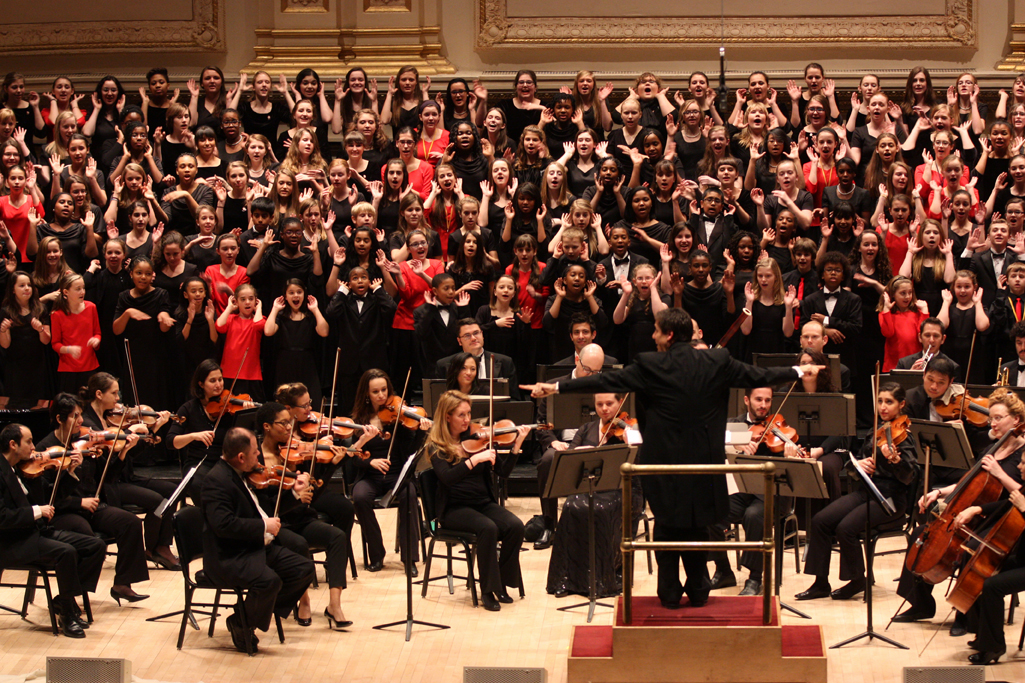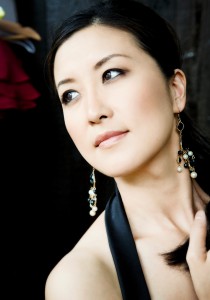“The Sounds of War and Peace,” a two-evening event begun January 20th, continued on January 21st with Chapter 2 – The music of Karl Jenkins. The United States premiere (and second performance worldwide) of Songs of the Earth was programmed with The Armed Man: A Mass for Peace and its accompanying film (also entitled The Armed Man), and it had the promise of being a fascinating evening.
The Armed Man: A Mass for Peace is probably the most frequently performed work by Karl Jenkins; in fact, it might be one of the most frequently performed works of any contemporary classical composer. Since its premiere in April 2000, The Armed Man has been performed worldwide well over 1000 times – an average of twice a week. Although I have heard this work on recording countless times and know it well, a live performance of The Armed Man is an experience that never ceases to move me.
The Armed Man is a thirteen-movement work for orchestra, chorus and vocal soloists. Using the 15th century French song L’homme Armé as a starting point, the theme is that the armed man must be feared – an idea that is still with us in the 21st century. Using sections of the Latin Mass, the Bible, The Mahabharata, and words from Kipling, Dryden, Tennyson, Mallory, Swift, Togi Sankichi, and Guy Wilson, this hour-long work is a journey through the preparations for battle, prayers for deliverance, the call to arms, the horrors of the battle, and its aftermath, with the final declaration that “peace is better than always war”.
The accompanying film I have always had mixed feelings about. It was premiered in its current form in Johannesburg, South Africa in September 2007. The images are powerful and often disturbing, as I am sure was the intent, to highlight the horrors of war. Quoting Jenkins, the film “greatly enhances the musical performances and inevitably leaves the audience emotionally drained, often in tears.” I understand Jenkins’ viewpoint, but I also believe the music is powerful enough to stand on its own without any imagery.
Conductor Jonathan Griffith knows this work well and his mastery was immediately obvious. His steady leadership kept everything under control, even deftly tackling a small ensemble problem in the “Better is Peace” movement that could have turned into a disaster. He brought it back on-track almost instantly. The Distinguished Concerts Orchestra played, especially the percussion section, with the fire this work demands. The chorus was well-prepared and a worthy collaborator to the orchestra. It was notable that the sopranos did not crash on the jagged rocks of “Charge!” in which the high A’s have claimed countless victims. Highlights included the cello solo in the Benedictus, and Iman Shamsi Ali in his off-stage Adhaan. The four vocal soloists were all impressive in their roles, limited though they were. My one disappointment was the surprisingly timid brass in the “Charge!” This was a time for them to really come to the fore and it just did not happen. All-in-all, it was a inspired performance that was held the listener from the opening snare drum marching cadence, to the chorus singing the healing words of Revelation 21:4, to end the work.
The Vocal Ensemble Brevis, an all-female choir from Croatia took to the stage to open the second half. Led by Antoaneta Radocaj-Jakovic, they presented works from the Croatian composers Josip Hatze (1879-1959) and Slavko Zlatić (1910-1961). Hatze’s Ljuven Sanak (Sweet Dreams) was especially soothing after the emotionally demanding first half of the concert. Zlatić’s Varijacije na nardonu temu (Variations on a Folk Theme) was an interesting work that deserves to better known. It was disappointing that the program notes omitted any information about the composers, the pieces, or the ensemble. This excellent assemblage deserved its proper recognition. As a way to bridge the two large Jenkins works, the ensemble ended with his Adiemus, which they performed with great energy and polish.
While the orchestra and chorus members returned to the stage, Griffith invited Karl Jenkins to the stage to have an impromptu discussion about his new work, Songs of the Earth. Jenkins told the audience that the work came from a commission from the Cultural Olympics. He decided to use the idea of Greek mythology as the basis for the work. Jenkins’ “invented language”, first used in the Adiemus project, was the text for Songs of the Earth. Jenkins explained this gives the composer great flexibility in tone and rhythm in the vocal writing. The six movements were selected because Jenkins found them “musically stimulating” as opposed to following any defined story lines.
Songs of the Earth is an interesting combination of the early Jenkins (Adiemus and the jazz influences from his Soft Machine days) with the larger works, such as The Armed Man, Stabat Mater, and The Peacemakers. The opening movement,” Khaos”, is aptly titled. An improvised saxophone solo plays over the pulsating rhythms of the orchestra and the chorus. It has a primordial quality suggesting the birth of the unformed universe. The second movement, “Gaia: Mother Earth” has the chorus chanting her name over and over in a worshipful manner or ritualistic adoration. “Ouranos and the Heavens”, the third movement, has an ethereal quality, with a singing violin solo and another improvised saxophone solo. The fourth movement, “Dance of the Titans”, with its ever changing meter (one bar 7/8, the next bar 3/4, then the pattern repeats), has a quirky feeling that at times boarders on the grotesque. “Tethys, Goddess of Fountains and Stream”, the fifth movement, has a flowing, water-like feel that the title suggests and features another extended saxophone solo. The final movement, “The Pit of Tartarus” has a relentless driving energy that is strongly akin to the Paradisi Gloria from Jenkins’ own Stabat Mater.
Mr. Jenkins should be pleased at the fine performance of his new work which made it a great success. Congratulations are in order for the chorus from Pennsburry, Pennsylvania (consisting of the High School Concert and Women’s Concert choirs with the Community Chorus), the Distinguished Concerts Orchestra, and conductor Griffith, who combined their considerable talents to make it all come together. Songs of the Earth should take its place with other of Mr. Jenkins’ popular works, and I’m sure his many fans will be looking forward to future performances.




